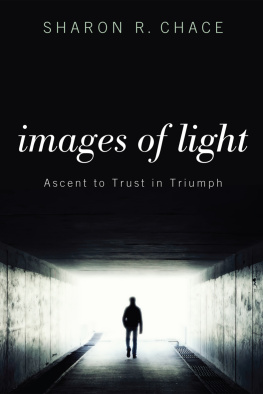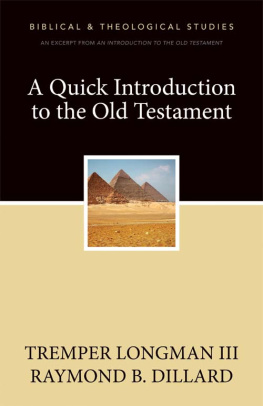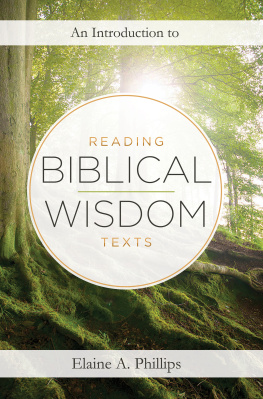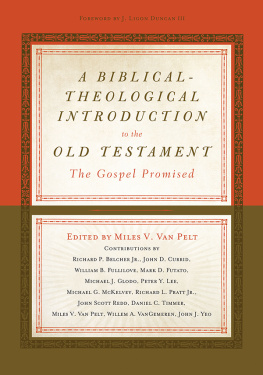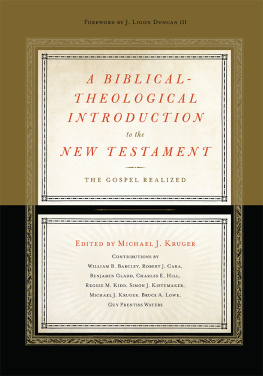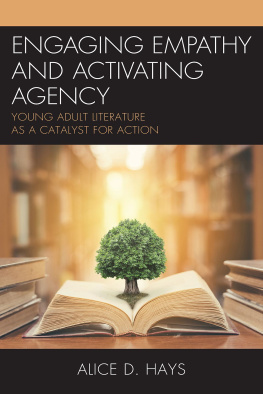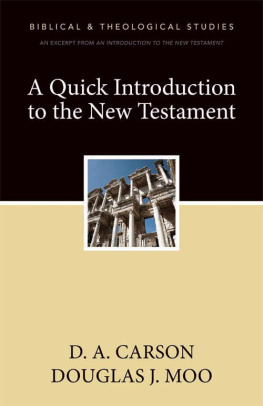Copyright 2011 Sharon R. Chace. All rights reserved. Except for brief quotations in critical publications or reviews, no part of this book may be reproduced in any manner without prior written permission from the publisher. Write: Permissions, Wipf and Stock Publishers, W. th Ave., Suite , Eugene, OR 97401 .
All Scripture quotations are taken from the New Revised Standard Version Bible, copyright 1989, Division of Christian Education of the National Council of the Churches of Christ in the United States of America. Used by permission. All rights reserved.
W. th Ave., Suite
Manufactured in the U.S.A.
stormy challenges.
Foreword
A ll too infrequently, a believera person of faithwill take pen to hand and write about the Bible or some part of it with considerable scholarship as background but with the immediate goal of teaching the uninitiated without (a) putting them to sleep or (b) putting them off.
Conversely, how often have we whose lifetime scholarly interests have been in translating, analyzing, and interpreting biblical texts become lost in a welter of footnotes and qualifications of this tense or that, in competing translations of Hebrew or Greek wordsproudly setting down the result of our labors as major contributions to knowledge. Well, they may be, but your citys telephone directory is also a contribution to the knowledge of, say, the number and location of the nearest auto repair garage. Such knowledge is rightly deemed useful.
Another way for believers to write about the Bible is in that imperious way so many have; i.e., this is the Word of the only God there is, so pay attention. Hard-core, hard-edged evangelism, in other words.
Sharon Chaces My First Introduction to the New Testament will put no one but the terminal narcoleptic to sleep and certainly not put off any interested inquirer who may not, in fact, wish to become a believer but, rather, will want simply to know what all the fuss is about this thing called the New Testament.
Useful is one adjective that will come to mind as the reader leafs through, then digs into this bookuseful, as in introducing the history, provenance, and content of the New Testament to adult seekers either for their own edification or to equip them to teach it to fellow adults or to teenaged Sunday school students.
Accessible it is as well. Without talking down to her readers, Chace will be found in serious but not stilted conversation with them. She writes most often in simple declarative sentences, a rarity among many of us who deal in allegedly more academic ways with biblical texts. Chace employs mention of color and textureterms and concepts she used with remarkable success in her previous book An Artistic Approach to New Testament Literature .
The reader will smile at first when he or she encounters Chaces depiction of the author of Mark wearing dark sun glasses while Lukes are rose-colored. Eventually, the reader will nod and smile again, having seen, with Chaces help, the important differences between the two gospels.
When Chace discusses the setting apart of deacons depicted in the Acts of the Apostles she writes: Church administrators are picked to run the churchs meal program. Who cant grasp that?
Of John : she writes: Another interpretation [of the verse] is that people who believe in Jesuss ethic of service, compassion, and forgiveness will be part of an ongoing movement that will matter forever. No snide disabusing of the ignorant or the orthodox here, just a gentle suggestion that salvation may have to do as much with ordinary acts of mercy and kindness as with abstract theology.
Heres how you will see her deal with one of the major differences between the Synoptic Gospels and the Gospel according to John: People do not talk in normal conversations like Jesus talks in John. So the style of Jesuss speech is a big hint that this gospel is a theological document. Chace pretty much thinks the Synoptics are to a greater degree reportage.
This book is an important contribution to a cause that sometimes seems well-nigh hopeless. I speak of biblical literacy. Not that teaching the Bible need be thought of as a matter of evangelism and conversion, though it sometimes is. The enjoyment and understanding of so much of classic English and American literature is impossible for those who have not attained at least an elementary acquaintance with the Bible. Try to understand almost any line of Paradise Lost and many allusions in the plays of William Shakespeare, even the priceless treasures that are the speeches of Abraham Lincoln, without knowing something of the biblical text. Language lurking among laws and statutes and in the clauses of insurance policies mentions the good Samaritan. Much social critique references the prodigal son. And it wasnt your Great Aunt Matilda who first said, Pride goeth before a fall.
Chace knows all that. She obviously loves the texts of the New Testament and is well versed in their form and content. Her book will be a boon to many a busy parish minister, distracted Christian education director, and harried Sunday school superintendent.
Will it satisfy one who has made an idol of the Bible and insists that its contents are meant only to be read, marked, and inwardly digested as holy writ rather than to be investigated as to provenance, authorship, and place in history? No, it will not. And for that reason aloneamong many reasons My First Introduction to the New Testament is a welcome addition to the library of biblical studies.
The pedagogy recommended in its pages is enlightened and, as I have said, useful and accessible. When you turn over this page, you will find yourself in a very inviting and informative space. Even if you think you know a lot about the New Testament, Chace, as gallery docent, will point out light and shadow that may have escaped even the most erudite in their scholarly scrutiny of the text. Thanks to Chace, the non-scholar will be delighted and charmed by what a treasure the New Testament text is.
Harry T. Cook
Authors Letter to Young Readers
D ear Young Readers,
Thank you for your curiosity about the New Testament, how it came to be, and how to enjoy looking at it like an artist.
The purpose of this letter is to tell you a little about myself and why I wrote this book. As I write this letter to you, I am sixty-six years old, and that is old enough to be your grandmother or great-grandmother. I have been interested in the Bible since my Sunday school days. My family did not have a car until I was about twelve years old. So I went to whatever Sunday school was in walking distance. At first I went to Sunday school at the Universalist Church in Rockport, Massachusetts, but when we moved to Pigeon Cove, which is the north village of Rockport, I went to an evangelical church called the Pigeon Cove Chapel. Even as an eight-year-old, I knew that these two churches were very different, but leaders in both churches taught that we are all Gods children and loved equally by God. That was certainly good news to me, the clumsy kickball player, who kicked the ball after it was in the catchers hands. In sympathy, my classmates tried to figure out how to adapt our playground games, which did not work too well. But their efforts were what really mattered. I suspected that my classmates learned to care at their various churches. I also knew that the idea that God loves all people came from the Bible and concluded that the Bible is a very important book.


